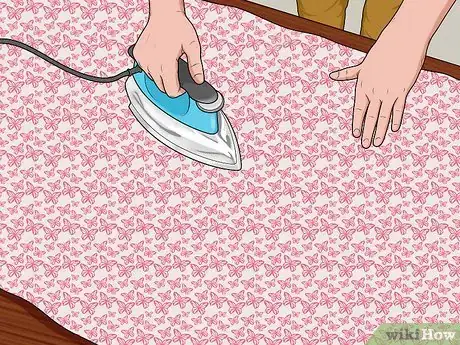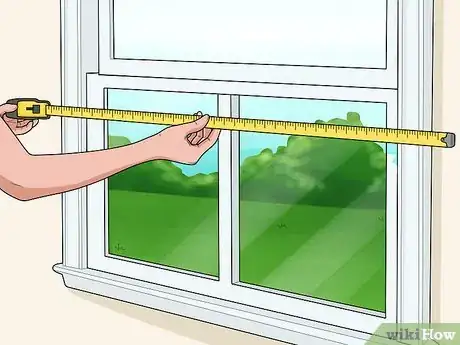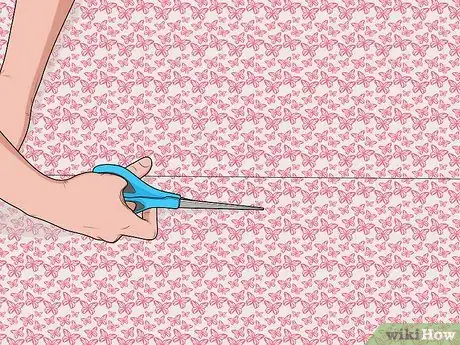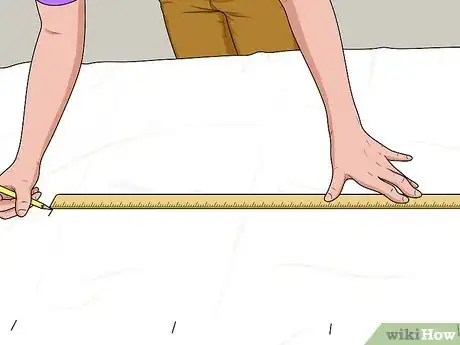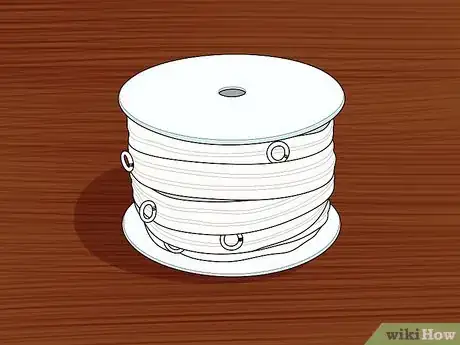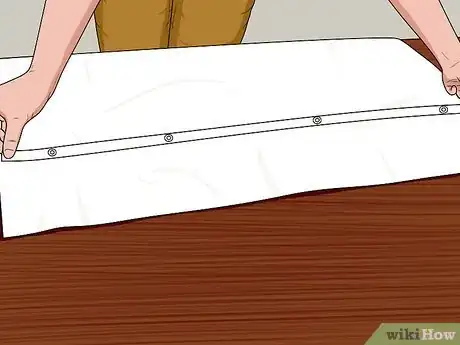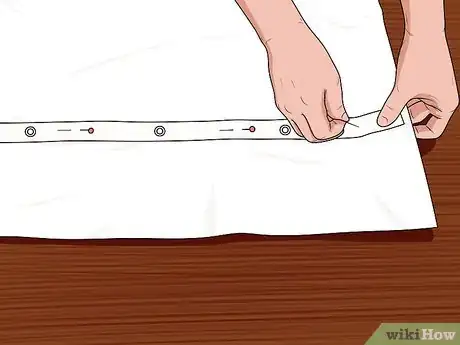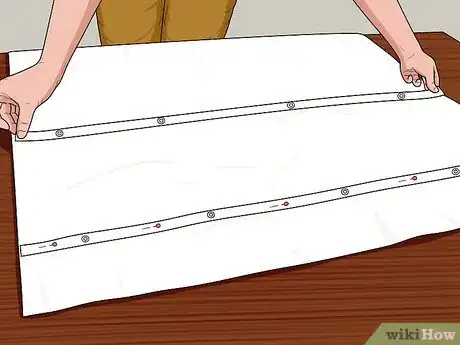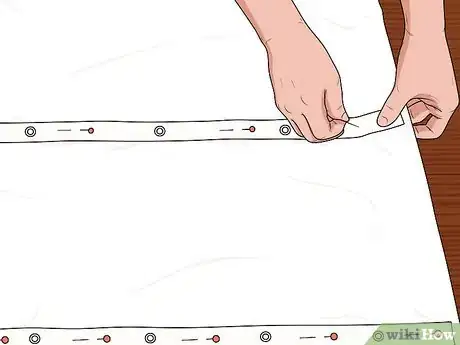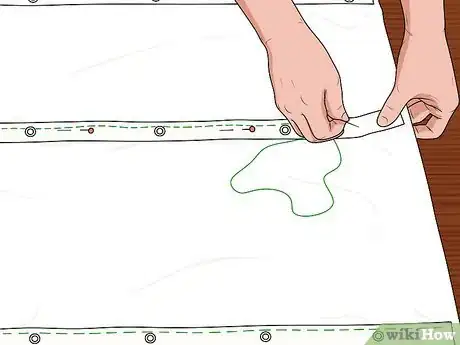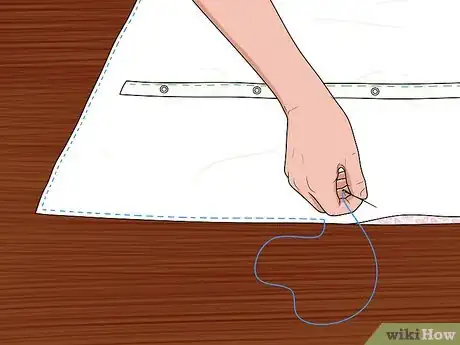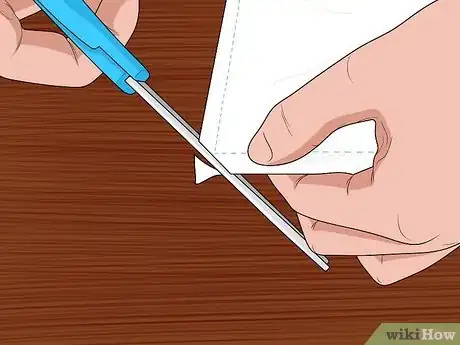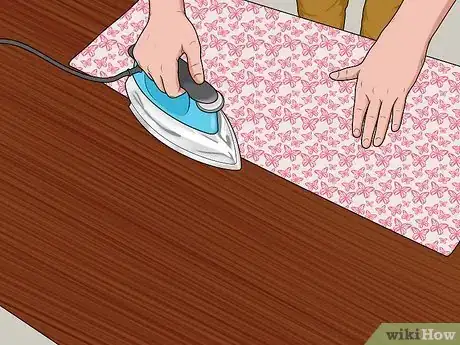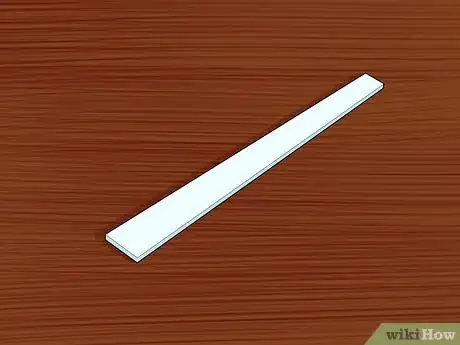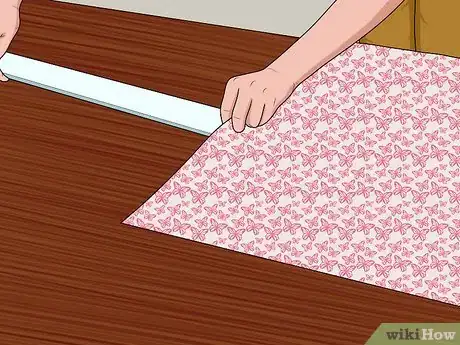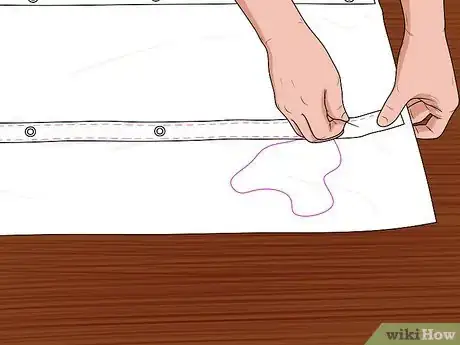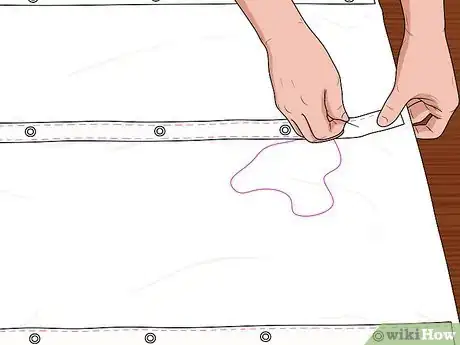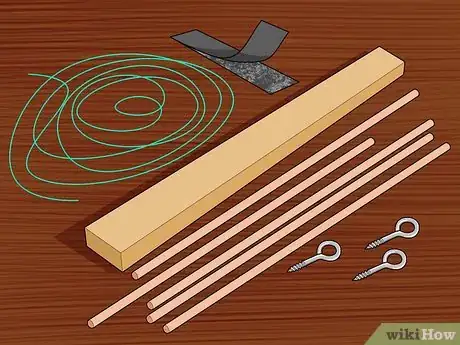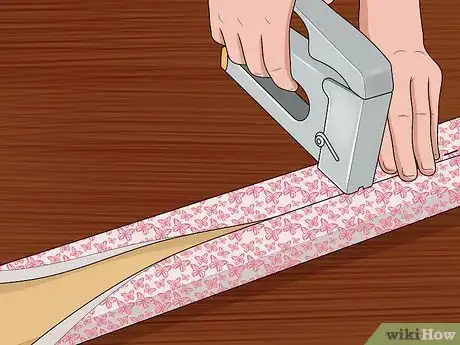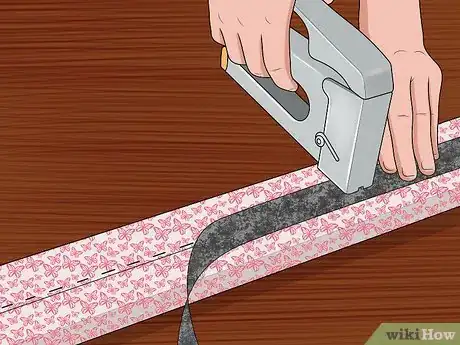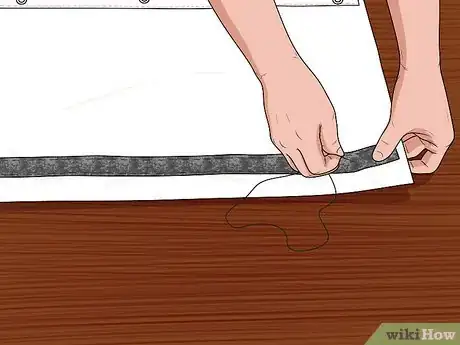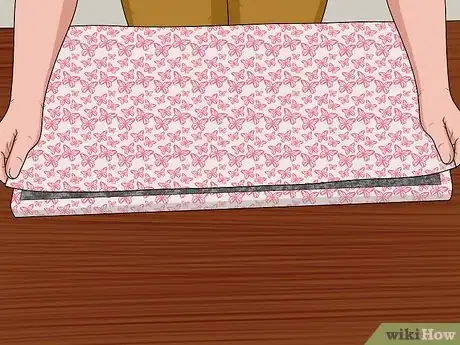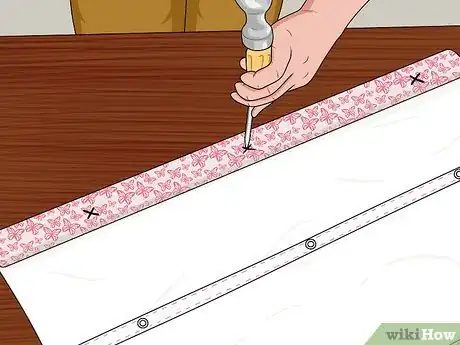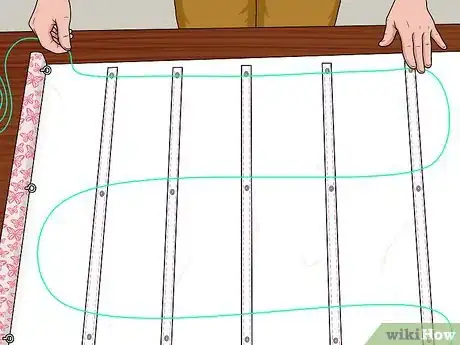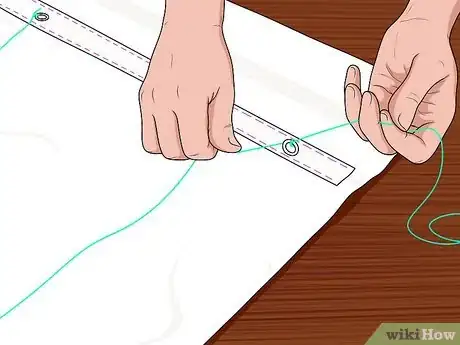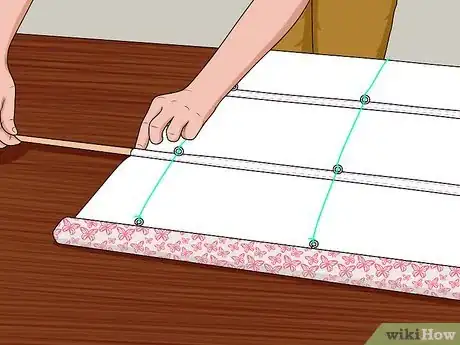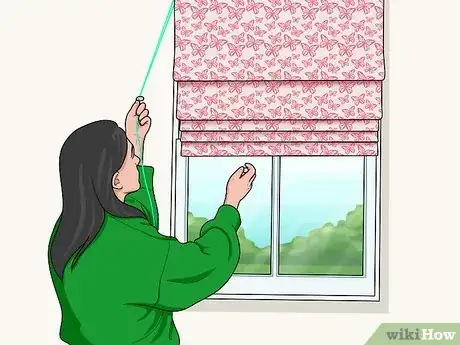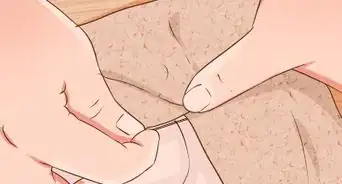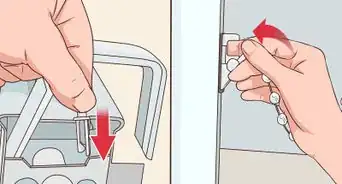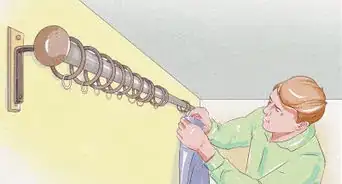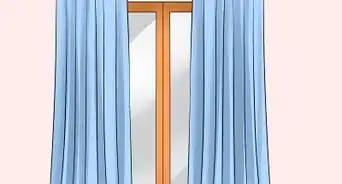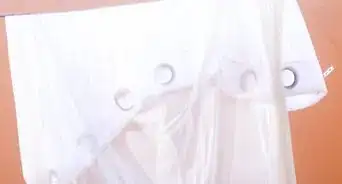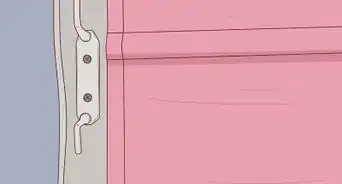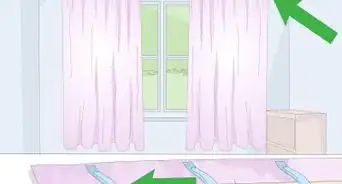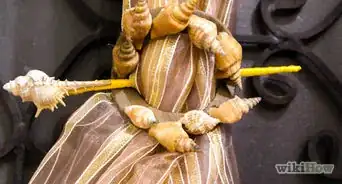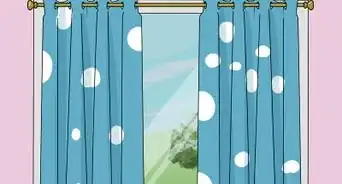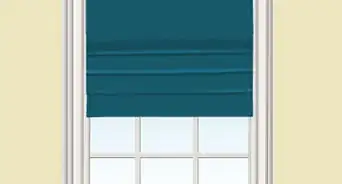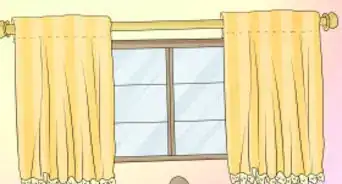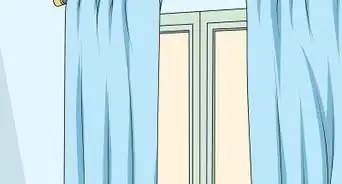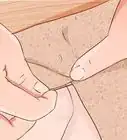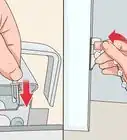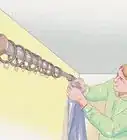This article was co-authored by Kanika Khurana. Kanika Khurana is an Interior Designer and the Owner of Kanika Design. With over 12 years of experience, Kanika specializes in remodeling, refurnishing, and color consulting. Kanika holds a Bachelor’s Degree in Psychology from San Francisco State University, a Redesign and Home Staging Certification, and an Associate Degree in Business Administration from Cañada College.
wikiHow marks an article as reader-approved once it receives enough positive feedback. In this case, 100% of readers who voted found the article helpful, earning it our reader-approved status.
This article has been viewed 147,114 times.
Basically, Roman blinds come from a variety of cloth. Some use silk, cotton, linen and more. The materials are held down by rods or metal support. They are folded to create a hobbled look. The cloth is very light in weight or it may also be medium weight. It is operated by a chain and you can fold it or bring it down whenever you want. Compared to traditional curtains, this is quite easy when it comes to covering and uncovering your windows.Installation of Roman Blinds is not too hard. As a matter of fact, you can do it yourself as long as you are confident on your measuring skills. Here are some of the steps that you need to follow when installing Roman Blinds.
- These blinds are not challenging to create, making them just takes a little time and effort. And, in the end, you'll have a wonderful customized roman blinds that suits completely and exactly what you're looking for...an affordable price.
Steps
-
1Give your fabric a good ironing.[1]
- A crisp press makes a sewing project so much easier!
- Always press both the fabric and lining.
-
2Measure the width and height of the inside of your window where the shade will be hanging.[2]Advertisement
-
3Cut out your fabric adding 1/2" to each side and 4" to the length.
-
4Take your lining and mark out your measurements for the tube tape (show below) with pins.[3]
- The first row of tape should be 5 inches (12.7 cm) from the bottom.
- The next row should be 8 inches (20.3 cm) up and repeat with three more rows 8 inches (20.3 cm) apart.
-
5Keep in mind that tube tape is a fantastic product that has little loops along the top of the tape for running nylon cord through (as shown above) and a pocket along the bottom (shown below) where you can insert a dowel.[4]
- If you are still unsure of what you are looking for, ask for tube tape used for roman blinds at your fabric store and they should hopefully know what you're looking for.
-
6Pin down the tube tape. Pin the tape to the right side of the lining and start at the bottom.
-
7Pin your tape down with the bottom of the tape right above the marking pin (as shown on the right). Keep measuring as you pin your tape across the width of the lining, making sure you are keeping the tape straight.
-
8Lay your next row of tape down, once again above the pin marking (refer to above photo). As you work your way across, pinning the tape down, measure 8" from the top of the tape to the top of the tape below and you will be able to make sure you are continuing to pin in a straight line.
-
9Continue laying out and pinning your rows of tape until you have five rows completed. You should have about 13" of fabric left after your fifth row of tape. You don't want to go too close to the top of your fabric or things will look very wonky when you're at the finishing stages!
-
10Baste your tape onto the lining. You can use bright colored thread in this tutorial for demonstration purposes, but you certainly don't have to. Just make sure when you are basting, that you stitch right along the top of the tape and avoid stitching over the little loops.
-
11Stitch the lining to the fabric! Pin the right sides together, and stitch the sides and bottom together with a 1/2" seam, leaving the top open.
-
12Trim the bottom corners and flip them right side out, making sure the corners are neatly pushed out. You're going to feel like a professional seamstress when you see your shade coming together! Press the edges of the shade out flat.
-
13Press the edges of the shade out flat.
-
14Find a slat of some sort to push into the bottom of your shade.
- The main thing you need to look for when choosing a slat, is that it is sturdy, yet slim. For this particular fabric blinds, Hubs had some plastic slats from an old mini blind hanging around, and it worked perfectly! It was flexible and yet wouldn't break - which is something you need to watch for if you use a wooden slat. If it is too thin, it can snap.
- A 1/4" thickness would be perfect. The width of the slat should not be greater than 1.25".
- The main thing you need to look for when choosing a slat, is that it is sturdy, yet slim. For this particular fabric blinds, Hubs had some plastic slats from an old mini blind hanging around, and it worked perfectly! It was flexible and yet wouldn't break - which is something you need to watch for if you use a wooden slat. If it is too thin, it can snap.
-
15Slide the slat between the fabric and lining down to the bottom of the blind. Stitch a pocket to keep the slat in place, which you can do either by hand or by machine.
- For this blind, try using a zipper foot and stitch with the machine. This is by far the most challenging step (if done by machine) as you need to make sure you are far enough away from the wall to accommodate the slat sticking out behind you and in front of you, as you stitch.Stitching by hand will alleviate this problem, but it does take longer.
-
16Stitch the tape again! This time, you'll be stitching through all the fabric so make sure your top thread and bobbin thread match the fabrics! (Bobbin thread should match the shade fabric and top thread should match the lining.) Once again, pin the tape and fabric together, making sure everything is smooth and flat.
-
17Carefully stitch in the "ditch", as you can see in the above picture.This will eliminate any chance of accidentally stitching the loops shut.
- Try pinning and stitching one row at a time, removing the basting before continuing on to the next row.This way you can be sure to pull the fabric smooth between each row and ensure a better finished product.
-
18Get your 1" x 2" board - measured and cut to fit inside the width of the window (ours was 45.75"), dowels, circle screws, velcro, nylon cord and cord drop.
-
19Using leftover fabric, "upholster" the 1" x 2" board. To be honest, this part is optional.
- The shade will work just fine without covering the board...it just won't look as nice! At any rate, if you choose to cover it...wrap it much the same as you would wrap a gift...just use staples instead of tape! Tuck those ends in and staple them neatly too![5]
-
20Staple the "hook" side of the velcro to one edge of the board.In this example, we stapled the velcro right over the staples fastening the fabric underneath, so everything is neat and tidy.
-
21Stitch the "loop" part of the velcro to the lining side of the shade.
-
22Stitch down both sides of the velcro. Trim the excess fabric down about 1/2" away from the velcro, as shown. Attach the velcro on the shade to the velcro on the board.
-
23Measure out and predrill holes for the little circle screws.Start by measuring in 2" on each end. Predrill. You want each of the screws to be roughly 10" apart. Try pre-drilling right in the middle of the board, and then again in the middle of the two "sections". It should look something like what's shown in the picture.
-
24Pull it all together with your nylon cord.Decide which side you want to have your cord drop (the side you want to pull the shade up) and start working on the opposite side of the shade.
- You will need to tie a bulky knot - and this is important because you don't want that knot eventually pulling through the loops on the tube tape.
- Try knotting it about three times, and then thread the cord through a large blunt needle. Again, start at the bottom of the opposite side you want your cord drop. Measure 2" in from the edge and pull your needle through a loop on the bottom row of tube tape.
- You will need to tie a bulky knot - and this is important because you don't want that knot eventually pulling through the loops on the tube tape.
-
25Just to make sure that knot doesn't come untied in the future (the nylon cord can be slippery), try stitching your knot together with a regular needle and thread. Just run some stitches through it all and eliminate a possible headache down the road.
-
26Insert the dowels into the little pockets in the bottom of the tube tape. You may need to trim down the length of the dowels to fit neatly inside the tape, and that can easily be done with a utility knife.[6]
-
27Pull your blind up and adjust the folds. It takes a few days to "train" the fabric to lie down into nice folds, especially if the fabric is thick.
- Try using a light blocking liner.
Community Q&A
-
QuestionWhere can I buy tube tape if my local Joann's did not have it?
 Community AnswerYou should be able to purchase it online, both Joann's and Hobby Lobby have websites you can order from. If all else fails, check Amazon.com.
Community AnswerYou should be able to purchase it online, both Joann's and Hobby Lobby have websites you can order from. If all else fails, check Amazon.com. -
QuestionHow do I avoid sewing the ends of the tube tape closed in step # 11 when I sew the lining onto the front of the shade?
 Community AnswerThere are slits along the tape for inserting the dowel. It just might end up being a bit narrower than the finished blind.
Community AnswerThere are slits along the tape for inserting the dowel. It just might end up being a bit narrower than the finished blind. -
QuestionIt tells how much fabric to use, but not how to measure the lining. Are they the same?
 Community AnswerIf your main fabric is thin/lightweight material, such as silk, muslin, or soft cotton, then your lining can be cut to the same size as your main fabric. If you are using heavy linen, heavy cotton, and blackout fabric as your lining, then cut the main fabric to the size of your window, and the lining smaller. So if the fold of the main fabric is 20 cm on the sides and top, and 40 cm at the bottom fold, cut the lining just so it fits inside the fold edge. This way you don't get the thick edges of 2 thick fabrics and the blind will fold up and down better.
Community AnswerIf your main fabric is thin/lightweight material, such as silk, muslin, or soft cotton, then your lining can be cut to the same size as your main fabric. If you are using heavy linen, heavy cotton, and blackout fabric as your lining, then cut the main fabric to the size of your window, and the lining smaller. So if the fold of the main fabric is 20 cm on the sides and top, and 40 cm at the bottom fold, cut the lining just so it fits inside the fold edge. This way you don't get the thick edges of 2 thick fabrics and the blind will fold up and down better.
References
- ↑ https://faultless.com/ideas-and-tips/how-to-iron-different-fabrics/
- ↑ https://blinds.lowes.com/sc/guides/measure-custom-blinds-and-shades
- ↑ https://www.dummies.com/crafts/sewing/how-to-make-roman-shades/
- ↑ https://www.idealhome.co.uk/news/how-to-make-a-roman-blind-craft-idea_1-50906
- ↑ https://www.dummies.com/crafts/sewing/how-to-make-roman-shades/
- ↑ https://www.idealhome.co.uk/news/how-to-make-a-roman-blind-craft-idea_1-50906
- ↑ https://sewguide.com/sewing-tape-measure/
